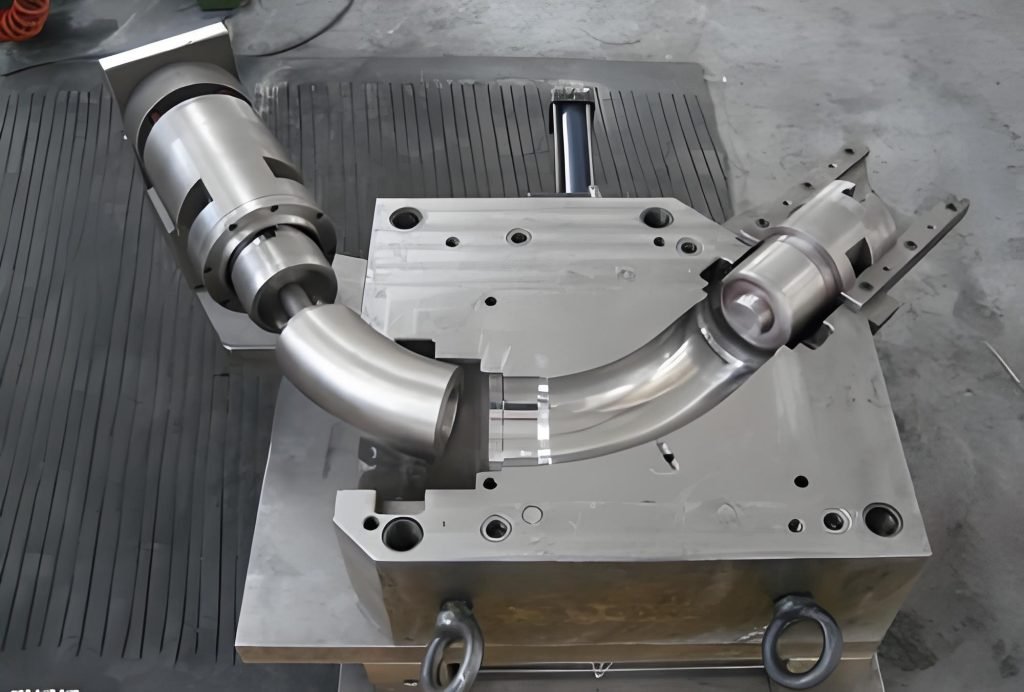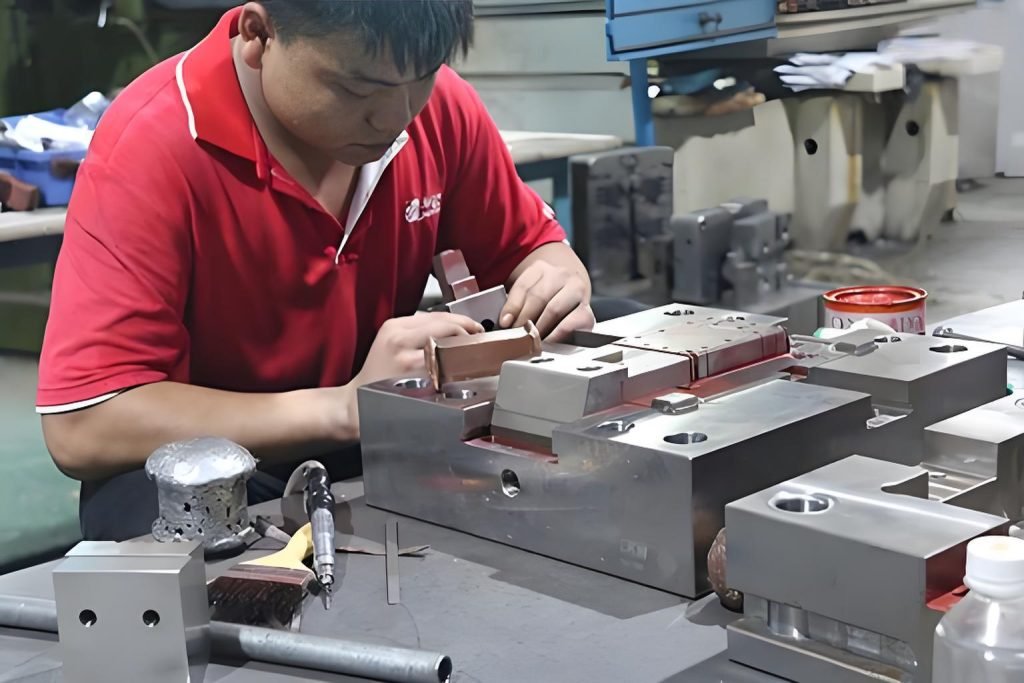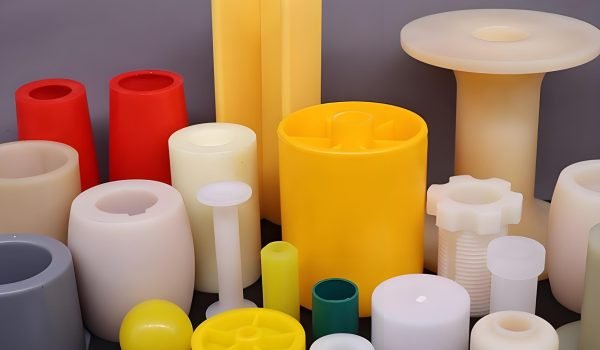Welcome to the awesome world of injection molding! Regardless of your experience level, the surest way to get the plastic parts you want is to master injection molding parameters. This guide will provide everything you need to know to optimize your process and get perfect parts.
Why Are Injection Molding Parameters Critical?
Getting your injection molding parameters correct is not simply a suggestion; it’s a required and essential part. They are the core controls that determine the success of your entire production run.
Quality Control
These parameters are important regarding quality control. Getting the settings correct will avoid defects like warping, sink marks, voids, etc. It is like baking a cake – the right temperature and time are needed for a good result. In the injection molding process, precise parameters will direct your parts to the desired standards.
Efficiency
The optimized parameters will make your production process efficient. Once you turn the parameter into the correct setting, you can continually reduce the cycle times. This improves the operation and creates a better bottom line.
Cost Savings
You can save costs in production when you reduce waste and rework. Getting your parameters set up in the right way means you will throw away fewer defective pieces, which saves money on raw material and labor overall, and makes your business more profitable.
Protecting Your Assets
With the proper settings, particularly injection pressure and temperature, you can protect your important assets. For example, if the pressure is too high, you may damage expensive molds. Proper settings will protect your machinery and mold from unnecessary wear and limit costs while assuring product quality.
Top 9 Key Parameters in Injection Molding

The injection molding process relies on a key set of interconnected parameters. These are categorized into core and additional settings that control the entire cycle from start to finish.
- Core Parameters: These are the fundamental settings for every molding cycle. They include temperature, injection molding pressure, injection molding speed, injection mold cooling time, and cycle time. Mastery of these parameters is essential to success.
- Additional Parameters: These are used for fine-tuning or specific project needs. They are the recovery rate, shrinkage rate, clamping force, and background pressure. Optimizing these settings can resolve and optimize a range of defects.
- Temperature
Temperature is one of the more essential parameters. It affects everything – not only how the plastic will flow through the injection process, but also how the final part will look and feel. There are three temperature classifications that you need to manage: melt temperature, mold temperature, and overall temperature control.
Melt Temperature
Melt temperature is the temperature at which the plastic melts, and it is important for proper flow. A low melt temperature injection molding may not allow the mold to fill completely, while a high melt temperature can cause degradation of the material. Always check the material data sheet for recommended temperature, and ideally, use a thermocouple for consistency.
Mold Temperature
The mold temperature refers to the temperature of the mold itself. It has a direct connection to the part’s cooling rate and surface finish. It is critical to retain a uniform temperature to prevent warping and internal stresses. Proper cooling channels are a necessity in achieving uniform temperatures. Adjusting this temperature can also assist with shrinkage and part dimensions.
Temperature Control
Consistent temperatures are imperative for consistent quality during the whole process. An advanced heating and cooling system that includes feedback loops can allow you to control temperature in real-time and ensure they are in optimum ranges. Accurate temperature control will help minimize quality issues and bring consistency from the first part to the last part.
- Pressure
Pressure is the force that moves the plastic from the machine through to the mold. Getting pressure correct is essential for proper filling without damaging the machine.
Injection Pressure
Injection pressure is what forces the molten plastic into the mold cavity. The pressure in high pressure injection molding must be strong enough to make the molten plastic fill every aspect of the mold. If the pressure is too high, then you may have flash or extra plastic coming out of the parting line. If it is low pressure injection molding, you might have missing parts. Achieving the correct balance often requires trial and error.
Holding Pressure
Once the mold is filled, holding pressure is applied to maintain the hold on the material as it cools down. Hold pressure counteracts the tendency of the material to shrink and prevents defects like sink marks or voids. You should monitor pressure decay to ensure that the part can become fully compacted as it is solidifying. This stage is the critical time where the part actually takes its final shape and density.
Nozzle Pressure
Nozzle Pressure is the force at the end of the injection unit that affects the consistency of the material flows. If you are using too much pressure, it can create excessive shear, which could destroy your plastic. So you need to find the right setting for a smooth, consistent flow into the mold.
Mold Locking Pressure
Mold locking pressure is the force that keeps the mold closed. This pressure must be high enough to resist the injection pressure; otherwise, flash will occur. But be careful not to put too much pressure when clamping the mold, as you could damage the mold.
- Injection Speed
Injection molding speed is all about how fast the plastic enters the mold. This can be the difference between a perfect part and a defect-filled one.
Injection Speed
Injection speed is the rate at which the molten plastic is injected. Faster speed is beneficial because the part will fill quickly (a plus for thin-wall parts), but it can trap air or create flow lines. Slower injection speed can create incomplete or short filling. The key is to establish the optimal speed to enable the best flow and fill the mold cavity fully, as evenly as possible, with no defects.
Screw Speed
Screw speed is the rotational rate of the screw to both melt and prepare the plastic. High speed injection molding may provide greater efficiency in plasticizing, meaning more material will be melted and ready to be injected. However, high screw speeds may unintentionally degrade the material, and they possibly add heat to the plastic as well. Finding the right screw speed means there will be a consistent amount of perfectly melted material available to be injected.
- Cooling Time
The cooling phase is where the part will solidify and achieve its final form. The cooling rate is simply the time it takes for the cooling phase to occur. If the cooling is too fast, you may experience warping or introduced internal stress. If the cooling is too slow, you are wasting time. Always take a look at the material datasheet to determine the correct cooling rate.
Quality cooling is very important to make sure that your part cools evenly. If you cool unevenly due to one side cooling faster than another, you may introduce warp or shrink defects to your part. The spacing of your cooling channels and the coolant flow rates have a big impact on ensuring a consistent temperature throughout your part.
- Recovery Rate
Screw recovery is how quickly the screw of the machine can retract to prepare a new shot of plastic. Being sure to optimize this speed is necessary to reduce the cycle time overall. This speed allows for a consistent supply of material, so in turn, you can reduce downtime and make it operate more smoothly and efficiently.
Besides, an efficient recovery process means that the high quality material is flowing consistently. This is affected by the design of the screw and back pressure, which produce the required melt of the plastic evenly. If you set these parameters incorrectly, your final part might be full of defects and inconsistencies.
- Shrinkage Rate
As all plastics shrink as they cool, you need to comprehend the reasoning here to get the appropriate dimensions on your parts. Shrinkage rate is the percentage that plastic material shrinks when moving from molten material to solid state. Since every material is different, you need to build this into your design to make sure the finished part is the right size.
To account for shrinkage, you need to make your mold’s overall dimensions slightly larger. You can use mold design software to help predict and account for this. It is also a good idea to test shots. This way, you can check your compensation and make any further adjustments to the process before beginning a production run.
- Clamping Force
The clamping force is the muscle of your injection molding machine, effectively keeping the molds closed. It needs to be strong enough to combat the various pressures when the plastic is injected. If the clamping force is weak, the mold may open slightly to allow for a lot of flash – excess material that seeps out along the parting line.
Having a uniform clamping pressure over the entire mold is critical. If the force is uneven, you may see defects as well as potentially damage to the mold itself. A well-designed mold and a well-functioning machine work together to exert an even clamping force across the entire mold to ensure that every part is the same and quality consistent.
- Back Pressure
Back pressure is the resistance the plastic is applying against the screw when it retracts, which is required to create a uniform melt. The higher the pressure, the better the mixing and consistency of the material, which is mainly advantageous for plastics that utilize colorants or additives. However, keep in mind that excess back pressure creates excess heat, resulting in the degradation of the material.
Ultimately, the best back pressure will be dependent upon your screw construction and the material in use. There is a balance created to obtain a perfectly uniform melt while preventing damage to the plastic. Proper adjustment of back pressure can also improve the energy efficiency of your machine, which would reduce production costs.
- Cycle Time
The total cycle time is the time it takes from mold closing until you eject the part. By managing and optimizing sub-parameters like filling, holding, cooling, and recovery times, meaningful efficiencies can be gained in your output. Even saving a couple of seconds per cycle is significant when producing over a long production run.
Getting to shorter and more efficient cycle times translates to more production and lower cost per part. This can be achieved through fine-tuning your settings, well-designed mold, automation, and equipment maintenance, which is the key to consistent and efficient cycle time.
How to Optimize Injection Molding Parameters for Quality Production?

Now that you know your parameters, how do you apply this in practice? Here are some best practices and things to avoid.
Best Practices
Experimentation: The first step is to experiment. Since every material, mold, and machine will be different, you should test to find the optimal settings. Start with the manufacturer’s recommendation, and make deliberate and documented changes.
Documentation: Always document your settings, including temperatures, pressures, and speeds. These complete records can be extremely useful for troubleshooting and repeatable production runs. They can help you identify trends and facilitate decisions on projects moving forward.
Regular Maintenance: A properly maintained machine leads to consistency. If you do not perform maintenance on your equipment (heating system, hydraulic system, etc.), then the parameters may not be adjustable, leading to unexpected downtime and potentially lost quality of parts produced.
Common Mistakes to Avoid
Ignoring Material Specifications: Never disregard the manufacturer’s effective recommendations for your plastic material. If you operate outside of these recommendations, you might risk degrading the material, poor quality of your parts, and damaging your machine.
Over- or Under-Filling the Mold: Setting the wrong speed and pressure for injection can lead to catastrophic defects. Over-filling your molded part can cause flash, while under-filling can cause short shots or incomplete parts. Balancing this quality can be a matter of precision tuning.
Neglecting Cooling Time: Don’t rush the injection mold cooling time. It may be tempting to save two minutes, but not allowing parts to cool properly will result in weak, warped, or deformed parts. The cooling phase is where the part attains its final strength and dimensional stability.
Conclusion
By mastering injection molding parameters, you can distinguish yourself as a better manufacturer. To master injection molding parameters is to achieve a balance that entails science, experience, and control. When you can understand the momentous impact that injection molding temperature, pressure, speed, and cooling time can have on production, you will be able to exceed your competition.
At Fecision, we understand that controlling injection molding parameters precisely creates the ultimate product quality. With ISO-certified facilities and experienced teams, we use state-of-the-art technology that allows us to control every variable from melt temperature to injection molding pressure precisely. We want to combine our precision with your vision. Our complementary partnership ensures design innovation, on-time delivery, and finished components to your specifications, every time.
Contact Fecision today, and we can discuss how to assist you in reaching your production goals and creating your perfect parts.




